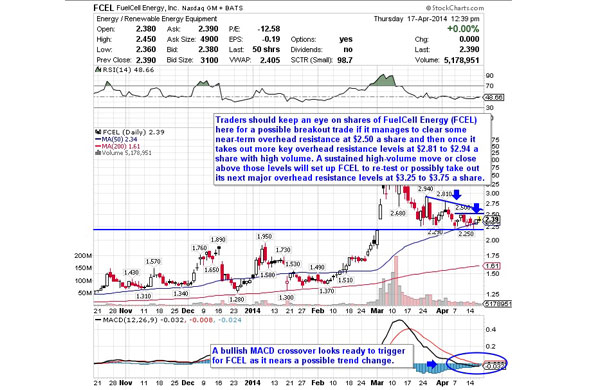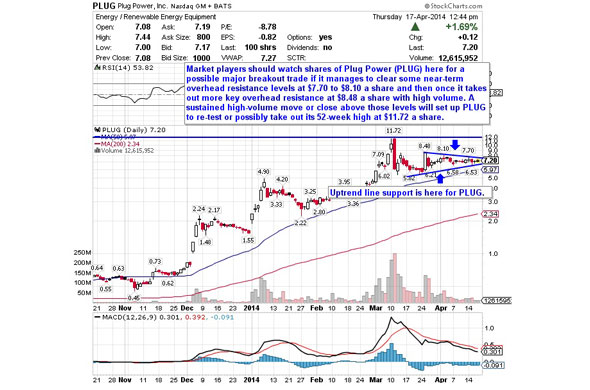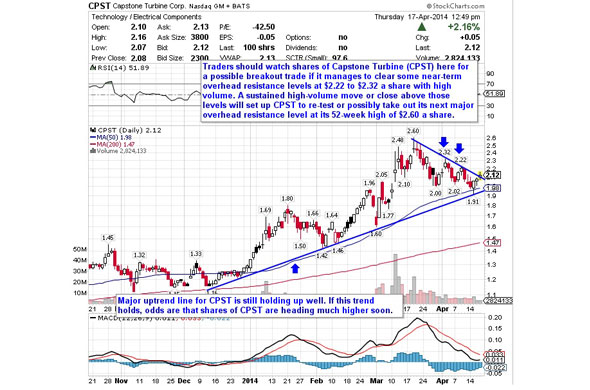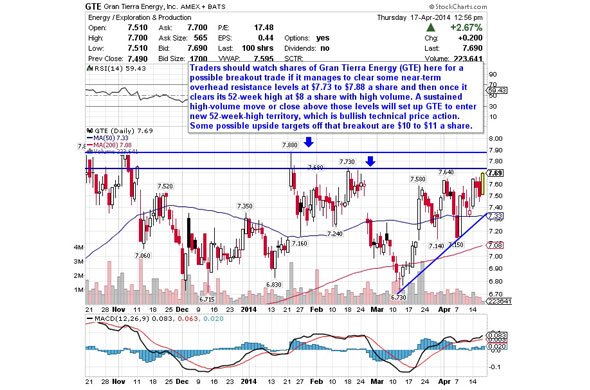BALTIMORE (Stockpickr) -- The S&P 500 has had a blockbuster year so far in 2013. At last count, shares of the big index have rocketed 23% higher since the start of the calendar year. So if you're not thinking defensively right now, you could be in for a rude awakening.
>>5 Stocks Poised for Breakouts
In football, the saying goes: The best defense is a good offense. That might be good advice for Super Bowl contenders, but it's terrible advice for investors.
As an investor, the best defense is a, well, good defense. And the best offense is a good defense too.
That's not just some investing platitude. It's backed up by stock market research. According to data collected by Cambria Investment Management CIO Mebane Faber, missing the best and worst days of the year with a defensive market posture actually outperforms a buy-and-hold approach.
So today, we're going defensive with five "sin stocks."
>>Do You Own These Blue-Chips? Sell Them!
Hot Defensive Companies To Buy Right Now: Dorchester Minerals L.P.(DMLP)
Dorchester Minerals, L.P. engages in the acquisition, ownership, and administration of producing and non-producing natural gas and crude oil royalty, net profits, and leasehold interests in the United States. Its net profits interests represent net profits overriding royalty interests in various properties owned by the operating partnership; and royalty properties consist of producing and nonproducing mineral, royalty, overriding royalty, net profits, and leasehold interests located in 574 counties and parishes in 25 states. Dorchester Minerals Management LP serves as the general partner of Dorchester Minerals, L.P. The company was founded in 1982 and is based in Dallas, Texas.
Advisors' Opinion: - [By Robert Rapier]
Q: The writer before you did not like Dorchester. Could you research it and give a recommendation by the next chat?
Dorchester Minerals (Nasdaq: DMLP) is a Texas-based partnership that owns producing and non-producing crude oil and natural gas properties, royalty, overriding royalty, net profits, and leasehold interests. The partnership is primarily a natural gas producer, and the biggest knock against it historically is that it hasn’t done a great job of growing proved reserves:
Dorchester Minerals Reserves History. Source: Dorchester Minerals Investor Presentation
Hot Defensive Companies To Buy Right Now: Western Asset Global Partners Income Fund Inc. (GDF)
Western Asset Global Partners Income Fund Inc. operates as a close-ended fixed income mutual fund launched and advised by Legg Mason Partners Fund Advisor, LLC. The fund is sub-advised by Western Asset Management Company. It primarily invests in the fixed income markets across the globe. The fund invests in high-yield U.S. and non-U.S. corporate debt securities and high-yield foreign sovereign debt securities. It benchmarks the performance of its portfolio against the Lehman Brothers U.S. Corporate High Yield 2% Issuer Cap Index and the JPMorgan Emerging Markets Bond Index Global Index. The fund was formerly known as Salomon Brothers Global Partners Income Fund Inc. Western Asset Global Partners Income Fund was founded in 1993 and is based in the United States.
Advisors' Opinion: - [By Chuck Carnevale]
Our first example looks at Vectren Corp.�� historical earnings, a utility with a 15-year historical earnings growth rate that is below our 3% threshold established in Part 1. Note that fair valuation is calculated using Graham Dodd�� Formula (GDF) deriving a fair value PE of 13.8 (slightly below, but close to our PE 15 standard). However, a normal PE of 16 has been historically applied by Mr. Market. Therefore, valuation falls between a PE of 13.8 to 16, or well within a range of normalcy.
CNinsure Inc., together with its subsidiaries, provides insurance brokerage and agency services, and insurance claims adjusting services in the People?s Republic of China. The company offers property, casualty, and life insurance products underwritten by domestic and foreign insurance companies operating in China. Its property and casualty insurance products include automobile, individual accident, commercial property, homeowner, cargo, hull, liability, and construction insurance; and life insurance products comprise individual whole life insurance, term life insurance, education annuity, and health insurance, as well as universal insurance and group life insurance. The company also offers insurance claims adjusting services, which include pre-underwriting survey, claims adjusting, disposal of residual value, loading and unloading supervision, and consulting services, as well as damage assessment, survey, authentication, and loss estimation to insurance companies and the i nsured; and value-added services to its customers in conjunction with distributing automobile insurance products. As of April 15, 2010, its distribution and service network consisted of 49 insurance agencies, 3 insurance brokerages, and 4 claims adjusting firms, with 571 sales and service outlets. The company was founded in 1998 and is headquartered in Guangzhou, the People?s Republic of China.
Advisors' Opinion: - [By Monica Gerson]
CNinsure (NASDAQ: CISG) is projected to post its Q4 earnings at $0.10 per share.
Ferrellgas Partners LP (NYSE: FGP) is expected to report its Q2 earnings at $0.85 per share on revenue of $722.07 million.
Hot Defensive Companies To Buy Right Now: SABMiller PLC (SBMRY)
SABMiller plc, incorporated on March 17, 1998, is a holding company, which has brewing and beverage interests across six continents. The Company together with its subsidiaries is engaged in the manufacture, distribution and sale of beverages. The Company is a brewer with more than 200 beer brands. The Company�� portfolio of brands includes international beers, such as Pilsner Urquell, Peroni Nastro Azzurro, Miller Genuine Draft and Grolsch, as well as local brands, such as Aguila, Castle, Miller Lite, Snow, Tyskie and Victoria Bitter. It is a bottler for the Coca-Cola Company in Africa and Central America. It operates in Latin America, Europe, North America, Africa, Asia Pacific, and South Africa.
Latin America
The Company�� primary brewing and beverage operations cover six countries across South and Central America (Colombia, Ecuador, El Salvador, Honduras, Panama and Peru). The Company is brewer in Argentina, and it exports to Bolivia, Chile and Paraguay. It bottles soft drinks for The Coca-Cola Company in El Salvador and Honduras, and for Pepsico International in Panama.
Europe
The Company�� primary brewing operations cover eight countries: the Czech Republic, Hungary, Italy, Poland, Romania, Slovakia, Spain (Canary Islands) and the Netherlands. A further 16 countries, including Russia, Turkey and the Ukraine are covered in a strategic alliance with Anadolu Efes through brewing, soft drinks or export operations. The Company exports volumes to a further seven European markets, of which the largest are the United Kingdom and Germany.
North America
The Company�� North America segment includes its 58% owned MillerCoors and 100% of Miller Brewing International and the its North American holding companies. The Company�� wholly owned Miller Brewing International business is based in Milwaukee, the United States and exports its brands to Canada and Mexico and throughout the Americas.
Africa
The Compa! ny�� brewing and beverage operations in Africa cover 15 countries. A further 21 are covered through a strategic alliance with the Castel group and it also has an associated undertaking in Zimbabwe. The Company bottles soft drinks for The Coca-Cola Company in 20 of its African markets (in alliance with Castel in 14 of these markets).
Asia Pacific
The Company�� partners with China Resources Enterprise, Limited in China. The Company is engaged in brewing business in India. The Company has operation in Vietnam and it exports to various markets, including South Korea and Singapore.
South Africa
The Company�� South African Breweries (Pty) Ltd (SAB) is South Africa�� producer and distributor of lager and soft drinks. It also exports brands for distribution across Namibia. Its soft drinks division is bottler of products for The Coca-Cola Company. The Company has hotel and gaming interests through its associate, Tsogo Sun Holdings Ltd, a hotel and gaming group in South Africa.
Advisors' Opinion: - [By Barry James]
LONDON -- In its final results for the year to March 31, SABMiller (LSE: SAB ) (NASDAQOTH: SBMRY ) , the global beverage-brewer and bottler with more than 200 beer brands and Coca-Cola bottling operations, saw group revenue increase by 10% to $34.5 billion and EBITA rise 14% to $6.4 billion, while pre-tax profit fell 16% to $4.7 billion.
- [By Rex Moore]
The craft brewing industry saw 15% volume growth in 2012, while the big guys -- led by Anheuser-Busch InBev (NYSE: BUD ) and SABMiller (NASDAQOTH: SBMRY ) , are watching their megabrands lose market share.
Hot Defensive Companies To Buy Right Now: Genuine Parts Company (GPC)
Genuine Parts Company distributes automotive replacement parts, industrial replacement parts, office products, and electrical/electronic materials in the United States, Puerto Rico, Canada, and Mexico. The company operates in four segments: Automotive Parts Group, Industrial Parts Group, Office Products Group, and Electrical/Electronic Materials Group. The Automotive Parts Group segment distributes automotive replacement parts for imported vehicles, trucks, SUVs, buses, motorcycles, recreational vehicles, farm vehicles, small engines, farm equipment, and heavy duty equipment. This segment also distributes accessory items used in the automotive aftermarket, such as repair shops, service stations, fleet operators, automobile and truck dealers, leasing companies, bus and truck lines, mass merchandisers, farms, industrial concerns, and individuals. It owns and operates automotive parts distribution centers and automotive parts stores under the NAPA name. The Industrial Parts G roup segment distributes industrial replacement parts and related supplies, such as bearings, mechanical power transmission, industrial automation, hose, hydraulic and pneumatic components, industrial supplies, and material handling products. This segment serves various industries, including the food, forest products, primary metal, paper, mining, automotive, petrochemical, and pharmaceutical industries. The Office Products Group segment involves in the wholesale distribution of a line of office and other business related products that are used in the daily operation of businesses, schools, offices, and institutions. The Electrical/Electronic Materials Group segment distributes insulating and conductive materials, assembly tools, test equipment, and custom fabricated parts. This segment provides distribution services to original equipment manufacturers, motor repair shops, and assembly markets. The company was founded in 1928 and is headquartered in Atlanta, Georgia.
Advisors' Opinion: - [By Rich Duprey]
Aftermarket auto parts supplier Genuine Parts (NYSE: GPC ) �reported first-quarter earnings that came up short of the Capital IQ consensus estimates, while also missing top-line�expectations, as well.
- [By Dividends4Life]
Related Articles
- Genuine Parts Company (GPC) Dividend Stock Analysis
- International Business Machines Corp. (IBM) Dividend Stock Analysis
- Monsanto Co. (MON) Dividend Stock Analysis
- Illinois Tool Works Inc. (ITW) Dividend Stock Analysis
- More Stock Analysis
- [By Lawrence Meyers]
That’s just one reason DD, with its 2.8% yield, is still one of the best dividend stocks. Plus, the payout has historically been about 50% of free cash flow.
Death-Defying Dividend Stocks: Genuine Parts Co. (GPC) Dividend Yield: 2.53%
- [By Lawrence Meyers]
Genuine Parts Company (GPC) is a $12 billion company with 1,100 Napa Auto Parts stores in the US, Canada, and Mexico.�It holds $250 million in debt and $197 million in cash. �Free cash flow improved to $800 million in FY12 from $600 million in FY11. GPC has a projected long term-growth rate of 10%, and trades at a FY13 P/E of 19, so I consider it vastly overvalued.
Hot Defensive Companies To Buy Right Now: Ryder System Inc.(R)
Ryder System, Inc. provides transportation and supply chain management solutions. It operates in three segments: Fleet Management Solutions (FMS), Supply Chain Solutions (SCS), and Dedicated Contract Carriage (DCC). The FMS segment offers leasing, contract maintenance, contract-related maintenance, and commercial rental of trucks, tractors, and trailers primarily in the United States, Canada, and the United Kingdom. It also offers fleet support services, such as fuel, insurance, safety, administration, environmental management, and information technology services. In addition, this segment sells its used vehicles through 55 company owned retail sales centers, as well as through its Web site, Usedtrucks.Ryder.com. Its customers include small businesses and enterprises operating in transportation, grocery, lumber and wood products, food service, and home furnishings industries. The SCS segment provides supply chain consulting solutions in North America and Asia. It offers di stribution management, transportation management, and professional services, as well as various support services, such as information technology and engineering solutions. This segment primarily serves automotive, electronics, high-tech, telecommunications, industrial, consumer goods, consumer packaged goods, paper and paper products, office equipment, food and beverage, and general retail industries. The DCC segment offers vehicles and drivers as part of a transportation solution in the United States. It combines the equipment, maintenance, and administrative services of a service lease with drivers and additional services, such as routing and scheduling, fleet sizing, safety, regulatory compliance, risk management, technology and communication systems support, and other technical support. This segment serves energy and utility, metals and mining, retail, construction, healthcare products, and food and beverage industries. The company was founded in 1933 and is based in Mia mi, Florida.
Advisors' Opinion: - [By James Miller Phd]
Required Rate of Return (r)
The capital asset pricing model (CAPM) estimates the required return on equity using the following formula: required return on stockj = risk-free rate + beta of j x equity risk premium
Hot Defensive Companies To Buy Right Now: Investment Technology Group Inc (ITG)
Investment Technology Group, Inc. (ITG), incorporated on March 10, 1994, is an independent execution and research broker that partners with global portfolio managers and traders to provide data-driven insights throughout the investment process. It operates in three segments: United States Operations, Canadian Operations, European Operations and Asia Pacific Operations. The United States Operations segment provides electronic and trade execution, trade order and execution management, network connectivity, analytical products and investment research services. The Canadian and Asia Pacific Operations segments provide electronic and high-touch trade execution, trade execution management, network connectivity, analytical products and investment research services. The European Operations segment provides electronic and high-touch trade execution, trade order and execution management, network connectivity and analytical products and includes a technology research and development facility in Israel.
ITG offers a range of solutions for asset managers in the areas of electronic brokerage, research sales and trading, trading platforms and analytics. These offerings include trade execution services and solutions for portfolio management, as well as investment research, pre-trade analytics and post-trade analytics and processing. Its principal subsidiaries include: ITG Inc., AlterNet Securities, Inc., ITG Derivatives LLC, Investment Technology Group Limited, ITG Australia Limited, ITG Canada Corp., ITG Hong Kong Limited, ITG Software Solutions, Inc. and ITG Solutions Network, Inc.
Electronic Brokerage
ITG electronic brokerage services include self-directed trading using algorithms, smart routing and matching through POSIT in cash equities (including single stocks and portfolio lists), futures and options. ITG Algorithms and ITG Smart Router offer portfolio managers and traders a way to trade orders quickly, from any ITG Execution Management System (EMS) or ITG Order Managemen! t System (OMS) and third-party trading platforms. ITG Algorithms help users pursue execution through two suites: ITG Single Stock Algorithms and ITG List-Based Algorithms. ITG Smart Router offers an alternative to routing trades that can help capture liquidity with a combination of speed and confidentiality. These routers continuously scan markets for liquidity with an emphasis on trading without displaying the order.
POSIT Alert is a buyside-only block crossing mechanism within POSIT. POSIT Alert scans uncommitted shares from participating clients. When a crossing opportunity is detected, POSIT Alert notifies the relevant users that a matching opportunity exists. POSIT Marketplace provides access to POSIT liquidity, the dark pools of other ATSs, and certain exchange hidden order types. POSIT Marketplace is a dark pool aggregator that provides clients with access to a range of liquidity destinations. POSIT Marketplace uses advanced quantitative techniques in an effort to protect clients from gaming and to interact with quality liquidity. ITG Derivatives provides electronic-listed futures and options trading, including algorithmic trading and direct market access. ITG offers options features for traders employing volatility or delta-neutral strategies and also provides low-latency application programming interfaces.
ITG offers guidance, administration, and consolidation of client commission arrangements across the range of preferred brokerage and research providers of its clients using ITG Commission Manager, a robust, multi-asset Web-based commission management portal. Through stock borrow and stock loan transactions, ITG facilitates shortened or extended settlement periods to help clients meet their internal cash flow needs.
Research Sales & Trading
ITG provides unbiased, data-driven equity research through its ITG Investment Research subsidiary. This offering has expanded ITG's client relationships beyond the trading desk to chief investment officer! s, portfo! lio managers and analysts. ITG Market Research offers market research capabilities to corporate clients within the healthcare and telecom industries. The healthcare market research practice combines survey results with empirical data to deliver syndicated and custom reporting capabilities. ITG provides high-touch sales trading and portfolio trading for institutional clients. ITG's high-touch trading desk is staffed with experienced trading professionals who provide ITG clients with execution expertise and also convey trading ideas based on ITG Investment Research.
Trading Platforms
ITG EMSs are designed to meet the needs of disparate trading styles. Triton Derivatives is a broker-neutral direct access EMS that provides traders with access to scalable, low-latency, multi-asset trading opportunities. ITG OMS combines portfolio management, compliance functionality (ITG Compliance Monitoring System), trading and post-trade processing (ITG Trade Operations Outsourcing), and a fully integrated and supported financial services communications network (ITG Net) with a consolidated, outsourced service for global trade matching and settlement (ITG Trade Operations Outsourcing) that provides connectivity to the industry's post-trade utilities, support for multiple, flexible settlement communications methods and a real-time process monitor. ITG Net is a global financial communications network that provides secure, reliable and fully supported connectivity between buy-side and sell-side firms for order routing and indication-of-interest messages from ITG and third-party trading platforms.
ITG's commitment to execution platforms also extends to broker-neutral operational services to help ensure that trades clear and settle efficiently, and to significantly lower the transaction costs associated with trade tickets. The ITG Smart Trading Analytics suite enables portfolio managers and traders to improve execution performance before the trade happens (pre-trade) and during trading ! (real-tim! e) by providing reliable portfolio analytics and risk models that help them perform predictive analyses, manage risk, change strategy and reduce trading costs. ITG Transaction Cost Analysis (TCA) offers measurement and reporting capabilities to analyze performance across the trading continuum. ITG Alpha Capture Reporting measures cost at every point of the investment process and provides portfolio managers with quarterly analytical reviews, written interpretations and on-site consultative recommendations to enhance performance.
ITG provides tools to assist asset managers with portfolio decision-making tasks from portfolio construction and optimization to the enterprise challenges of global, real-time portfolio compliance monitoring and the fair valuation of securities. ITG Portfolio Fair Value Service helps mutual fund managers meet their obligations to investors and regulators to fairly price the securities within their funds, and helps minimize the impact of market timing. ITG Portfolio Optimization System allows portfolio managers to develop new portfolio construction strategies and solve complex optimization problems. ITG Portfolio Optimization System allows users to accurately model tax liability, transaction costs and long/short objectives, while adhering to diverse portfolio-specific constraints.
Non-U.S. Operations
ITG has a development center in Tel Aviv. In Asia Pacific, ITG has offices in Sydney, Melbourne, Hong Kong and Singapore. Local representation in regional markets provides an important advantage for ITG. ITG also provides electronic and high-touch trading for Latin American equities, including algorithms for Brazil and Mexico, from its New York headquarters.
Canadian Operations
ITG Canada provides electronic brokerage services, including ITG Algorithms, ITG Smart Router and the POSIT suite, as well as high-touch agency execution and portfolio trading services. In addition, ITG Canada provides Triton, Triton Derivatives! , connect! ivity services, ITG Single Ticket Clearing, ITG Portfolio Optimization System, ITG Smart Trading Analytics, ITG TCA and investment research services. ITG Canada also engages in principal trading activities. ITG Canada's customers primarily consist of asset and investment managers, broker-dealers and hedge funds.
European Operations
ITG Europe focuses on trading European, Middle Eastern and African equities, as well as providing ITG's technologies to its clients. ITG Europe provides electronic brokerage services, including ITG Algorithms, ITG Smart Router, and the POSIT suite, as well as high-touch agency execution and portfolio trading services. ITG Europe also provides ITG OMS, Triton, connectivity services, ITG Single Ticket Clearing, ITG TCA, ITG Alpha Capture Reporting and ITG Smart Trading Analytics.
Asia Pacific Operations
ITG provides institutional investors with a range of ITG's products and services including trade execution, trade execution management through Triton, connectivity services and pre-and post-trade analysis through ITG TCA and ITG Smart Trading Analytics. Execution services are provided through electronic brokerage products such as ITG Algorithms and the POSIT suite and through an experienced high-touch agency trading services team. Other trading tools provided by ITG Hong Kong include Triton, connectivity services, ITG TCA and ITG Smart Trading Analytics. ITG Singapore provides institutional investors in Singapore with a range of ITG's products and services including electronic and high-touch execution services, trade execution management through Triton and trading analysis through ITG TCA and ITG Smart Trading Analytics.
Advisors' Opinion: - [By Jon C. Ogg]
Investment Technology Group Inc. (NYSE: ITG) was downgraded to Market Perform from outperform by Keefe�Bruyette & Woods.
Liquidity Services Inc. (NASDAQ: LQDT) was raised to Buy from Underperform, and the price target was raised up to $45 from $28.50, at Merrill Lynch.
- [By victorselva]
The Charles Schwab Corporation (SCHW) is a savings and loan holding company. The company is engaged, through its subsidiaries, in securities brokerage, banking, money management, and financial advisory services. Its subsidiaries include Charles Schwab & Co. (a leading discount broker-dealer), Charles Schwab Investment Management (a mutual fund investment advisor) and Charles Schwab Bank.In this article, let's take a look at this brokerage firm and try to explain to investors the reasons this is an apparently appealing investment opportunity.The FocusThe company provides financial services to individuals and institutional clients through two segments: Investor Services and Institutional Services. The Investor Services segment provides retail brokerage and banking services to individual investors. The Institutional Services segment provides custodial, trading, and support services to independent investment advisors. The Institutional Services segment also provides retirement plan services, specialty brokerage services, and mutual fund clearing services. The company seeks to meet the financial services needs of investors, advisers and employers. It focuses on building client loyalty with the goal of attracting new clients and serving them. Additionally, Schwab麓s strengths through shared core processes and technology advances which help create services that are scalable and consistent with the business.Interest Rates, Capital Structure and Debt-to-Capital RatioThe results are dependent on short-term interest rates, as 37% of its top line came from net interest income in the first quarter of 2014.The broker has been making significant efforts to become less dependent on interest rates, which we expect Federal Reserve will raise them in late 2014 or 2015. Also, the company麓s plan is to reach a low-cost capital structure and targets a long-term debt-to-total financial capital ratio of less than 30%.Lucrative Derivatives Trading In 2011, the company acquired Compl
Hot Defensive Companies To Buy Right Now: Atmos Energy Corporation(ATO)
Atmos Energy Corporation, together with its subsidiaries, engages primarily in the distribution, transmission, and storage of natural gas in the United States. The company operates in four segments: Natural Gas Distribution; Regulated Transmission and Storage; Natural Gas Marketing; and Pipeline, Storage, and Other. The Natural Gas Distribution segment involves in regulated natural gas distribution business and related sales operations. It distributes natural gas through regulated sales and transportation arrangements to approximately 3 million residential, commercial, public authority, and industrial customers in 12 states located primarily in the southern United States. As of September 30, 2009, this segment owned approximately 70,879 miles of underground distribution and transmission mains. The Regulated Transmission and Storage segment transports natural gas for third parties and manages five underground storage reservoirs in Texas. It owned 5,950 miles of gas transmis sion and gathering lines. The Natural Gas Marketing segment provides various natural gas management and marketing services to municipalities, other local gas distribution companies, and industrial customers. The Pipeline, Storage, and Other segment offers natural gas gathering, transmission, and storage services. It owned 113 miles of gas transmission and gathering lines. Atmos Energy Corporation was founded in 1906 and is headquartered in Dallas, Texas.
Advisors' Opinion: - [By Marc Courtenay]
Another lesser-known possibility is Atmos Energy (ATO), the $3.93 billion (market cap) company that engages in the distribution, transmission, and storage of natural gas in the United States. As of the last quarter of 2012, its year-over-year EPS growth was 17.5%.
 Related BZSUM Mid-Morning Market Update: Markets Rise; Merck Earnings Beat Street View #PreMarket Primer: Tuesday, April 29: US Steps Up Sanctions Against Russia
Related BZSUM Mid-Morning Market Update: Markets Rise; Merck Earnings Beat Street View #PreMarket Primer: Tuesday, April 29: US Steps Up Sanctions Against Russia  Justin Sullivan/Getty Images WASHINGTON -- Contracts to buy previously owned U.S. homes rose in March for the first time in nine months, a sign the housing market could be stabilizing after suffering a setback from a rise in interest rates and a severe winter. The National Association of Realtors said Monday its pending home sales index, based on contracts signed last month, increased 3.4 percent to 97.4. The increase beat economists' expectations for a 1 percent advance. These contracts usually become sales after a month or two, and March's rise suggested home resales could rebound in the months ahead. Sales stumbled last summer after that the U.S. Federal Reserve signaled it would soon reduce its economic stimulus efforts, pushing interest rates higher. A harsh winter also helped keep potential buyers out of the market. "The stronger pending home sales report hints at resurgence in housing market momentum during the typically busier spring buying season," said Gennadiy Goldberg, a strategist at TD Securities. Goldberg said the data suggested housing would continue to support U.S. economic growth in the coming months. The U.S. economy hit a slow patch over the winter, which was particularly harsh in much of the country, but growth is expected to rebound during the rest of 2014. The U.S. Labor Department is expected to report on Friday the economy created 210,000 jobs in April. Prices for U.S. stocks opened higher Monday, while the yield on 30-year U.S. government bonds rose following the release of the housing data. Existing home sales had fallen to their lowest levels in more than 1½ years, but details of Monday's report suggested the downward trend in sales had probably run its course, with housing inventory rising and more first-time buyers coming into the market. Despite last month's surge, pending home sales were still down 7.9 percent compared to March of last year. Contracts increased in the Northeast, in the South and in the West. They fell in the Midwest.
Justin Sullivan/Getty Images WASHINGTON -- Contracts to buy previously owned U.S. homes rose in March for the first time in nine months, a sign the housing market could be stabilizing after suffering a setback from a rise in interest rates and a severe winter. The National Association of Realtors said Monday its pending home sales index, based on contracts signed last month, increased 3.4 percent to 97.4. The increase beat economists' expectations for a 1 percent advance. These contracts usually become sales after a month or two, and March's rise suggested home resales could rebound in the months ahead. Sales stumbled last summer after that the U.S. Federal Reserve signaled it would soon reduce its economic stimulus efforts, pushing interest rates higher. A harsh winter also helped keep potential buyers out of the market. "The stronger pending home sales report hints at resurgence in housing market momentum during the typically busier spring buying season," said Gennadiy Goldberg, a strategist at TD Securities. Goldberg said the data suggested housing would continue to support U.S. economic growth in the coming months. The U.S. economy hit a slow patch over the winter, which was particularly harsh in much of the country, but growth is expected to rebound during the rest of 2014. The U.S. Labor Department is expected to report on Friday the economy created 210,000 jobs in April. Prices for U.S. stocks opened higher Monday, while the yield on 30-year U.S. government bonds rose following the release of the housing data. Existing home sales had fallen to their lowest levels in more than 1½ years, but details of Monday's report suggested the downward trend in sales had probably run its course, with housing inventory rising and more first-time buyers coming into the market. Despite last month's surge, pending home sales were still down 7.9 percent compared to March of last year. Contracts increased in the Northeast, in the South and in the West. They fell in the Midwest.







